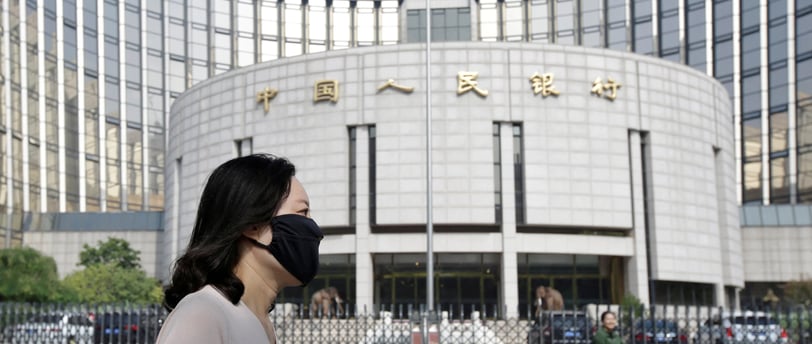Add your promotional text...
China’s Record-High Budget Deficit: A Bold Move to Boost Economic Growth
Synopsis: China has set its highest-ever budget deficit target, increasing it to 4% of GDP for 2025. This strategic move aims to bolster the country's economic growth amid challenges such as anticipated U.S. tariffs and global economic uncertainties. The increased spending is expected to drive fiscal stimulus and stabilize growth at 5%.
MARKETSGLOBAL
By Alankrita Shukla
12/17/20243 min read


China’s Deficit Strategy: A Historical High
In a decisive effort to sustain its economic momentum, China’s leadership has announced a plan to raise the country’s budget deficit to 4% of GDP for 2025, a record-high target. This shift marks a significant increase from the 2024 target of 3% and reflects a commitment to adopting a more proactive fiscal policy to maintain its growth trajectory.
The move comes in the wake of key political meetings, including the December Politburo session and the Central Economic Work Conference (CEWC). While the new targets are not yet formalized, they underline Beijing’s intent to stimulate domestic demand, invest in infrastructure, and mitigate external economic risks.
Key Takeaways from the New Fiscal Policy
Increased Deficit Spending
The budget deficit will rise by 1 percentage point, translating to 1.3 trillion yuan ($179.4 billion) in additional expenditure.
This increased spending will be financed through the issuance of off-budget special bonds.
Maintaining a Growth Target of 5%
China’s GDP growth target for both 2025 and 2024 is set at around 5%, reflecting an emphasis on stability and long-term economic planning.
Proactive Fiscal Measures
The heightened deficit aligns with Beijing’s shift toward more aggressive fiscal intervention to address economic headwinds.
This policy aims to counteract potential global challenges, including anticipated U.S. tariffs on Chinese goods under Donald Trump’s presidency.
Understanding the Drivers Behind the Deficit Increase
1. Global Trade Pressures
The return of Donald Trump to the U.S. presidency is expected to bring tighter trade policies and potential tariff increases on Chinese goods. This could create downward pressure on China’s exports, necessitating domestic fiscal measures to cushion the impact.
2. Domestic Economic Stability
China’s economy has been grappling with slower growth in recent years due to:
A cooling real estate sector.
Declining consumer demand.
Ongoing supply chain disruptions from the pandemic aftermath.
The increased deficit is designed to boost infrastructure investments and stimulate domestic consumption, key levers for economic stability.
3. Structural Reforms
The decision to issue off-budget special bonds reflects a focus on financing long-term developmental projects rather than recurring expenses. These bonds are expected to support initiatives in infrastructure, technology, and clean energy, aligning with China’s strategic goals for modernization.
The Role of the Politburo and CEWC in Policy Formulation
The fiscal targets were set during critical political meetings, including the December Politburo session and the Central Economic Work Conference. These platforms provide a roadmap for China’s economic policies, emphasizing:
Fiscal Proactivity: Encouraging higher government spending to stimulate growth.
Monetary Policy Alignment: Supporting fiscal measures with a stable monetary environment to avoid inflationary risks.
Focus on Domestic Growth: Reducing reliance on external markets and bolstering internal economic resilience.
How Does This Compare to Global Norms?
China’s deficit increase to 4% of GDP aligns with global trends, particularly among advanced economies that have adopted expansionary fiscal policies post-pandemic.
United States: Maintains a higher deficit-to-GDP ratio, reflecting heavy spending on infrastructure and defense.
European Union: While fiscal prudence is emphasized, several member states have exceeded the traditional 3% deficit ceiling.
China’s decision, however, is significant given its traditionally conservative fiscal policies. The shift underscores the leadership’s willingness to prioritize growth over fiscal restraint.
Economic Implications of the Deficit Increase
1. Boosting Domestic Demand
The additional spending is expected to drive:
Infrastructure development: Roads, bridges, and energy projects.
Consumer confidence: Higher public investments can spur employment and spending.
2. Potential Risks
Debt Concerns: While off-budget bonds provide flexibility, they add to China’s overall debt burden.
Inflationary Pressures: Increased spending could stoke inflation if not carefully managed.
3. Strengthening Global Influence
By maintaining strong growth, China can bolster its global economic standing and compete effectively in areas like technology, trade, and renewable energy.
What’s Next?
While the official announcements regarding the budget deficit and growth targets are expected during the annual parliamentary meeting in March, there is room for potential revisions. Policymakers will monitor both domestic and international developments closely before finalizing the fiscal plan.
In conclusion, China’s decision to raise its budget deficit to 4% of GDP represents a bold and strategic move to sustain economic growth in the face of mounting challenges. By prioritizing proactive fiscal measures, the country aims to navigate global uncertainties, support domestic demand, and lay the groundwork for long-term development.
While the increased spending comes with risks, it underscores Beijing’s commitment to ensuring stability and resilience in the world’s second-largest economy. As the formalization of these targets approaches, the global economic community will be watching closely to gauge the broader implications of China’s fiscal strategy.
Disclaimer:
This article is for informational purposes only. The content was reviewed by an editor but derived with AI support. For further details, please consult official announcements and trusted economic advisors.
